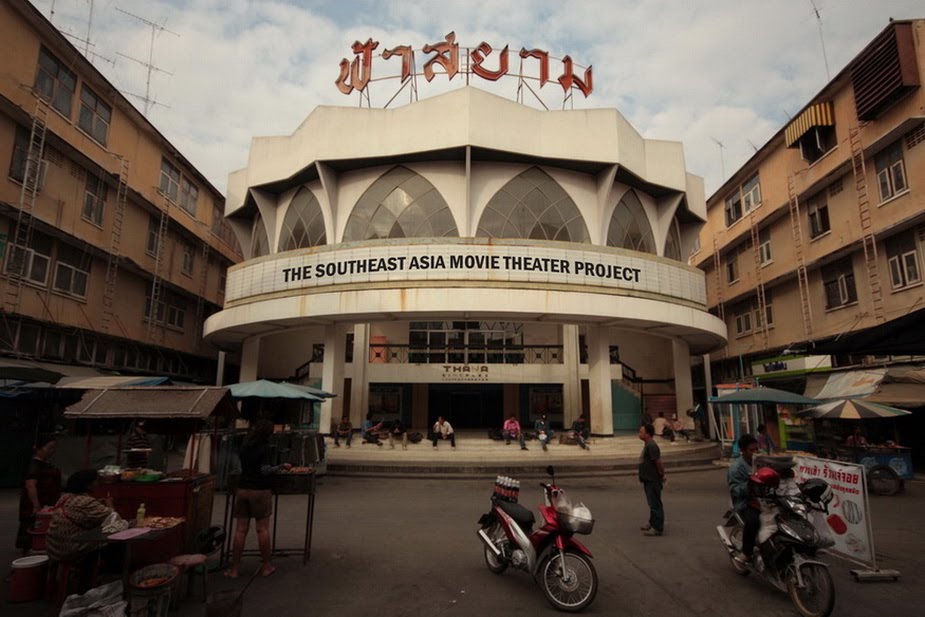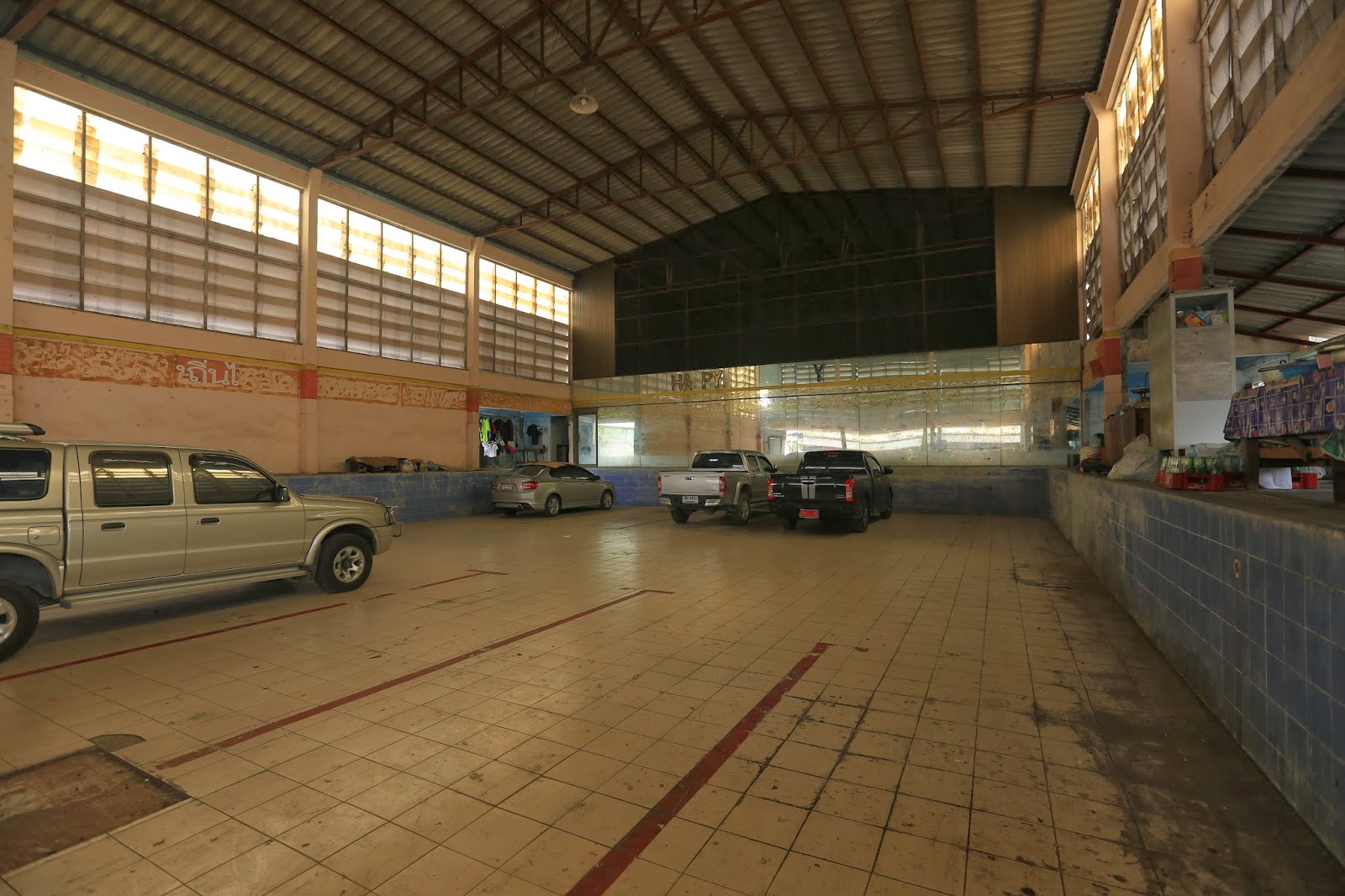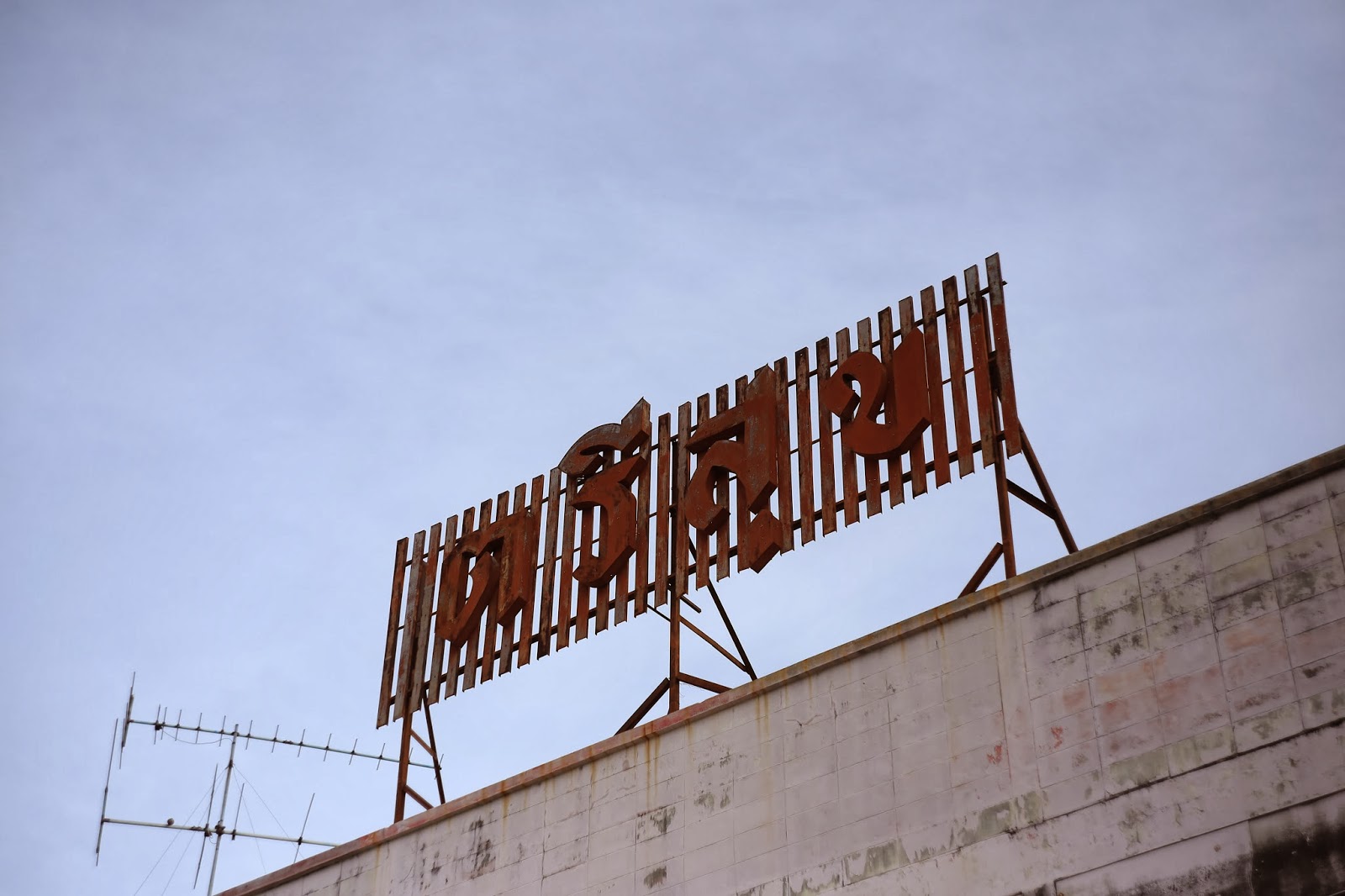"It smelled like slow death in there, malaria, nightmares"
- Captain Willard, Apocalypse Now
The third floor of the Tang Sia Huad Rama, once an area reserved for the storage of film reels and other notions of movie exhibition, is now home to festering piles. Anonymous piles, to be sure. Only their amorphous blackness was evident, and that they were inhabited by swarms of fleas that the strays had brought in. Whether the strays were animal or human wasn't immediately clear either.
Nearby shopkeepers in this crumbling quarter of Nakorn Pathom assured me that the cops had chased out the nefarious elements long ago. No more fiends tended to their addictions in the gangrenous warmth of the abandoned cinema. But the fleas. Yes, the fleas reign supreme. No sooner had I planted my feet in preparation for taking a shot than the fleas pounced on my exposed ankles, gorging themselves with reckless abandon. My speckled legs glowed pink with poison as the fleas advanced higher.
On the far wall of the room, Al Pacino's head, in the role of Officer Frank Serpico, stared back at me from where it had been pasted decades ago. Testament to the theater's illustrious working days. Al - or Frank Serpico, I should say - gazed out mockingly. On second thought, maybe it was a look of pity. Outside the theater, the howls and cries of the local stray brigade could be heard. They were working themselves into a frenzy in advance of the battle they would bring to the invader of their den.
Frank Serpico overlooks festering piles.
How to exit the cinema without incurring bloodshed quickly became my preoccupation. I doubted the hounds would enter the theater knowing I was inside. That would be too risky for them. It would be a waiting game from here on out. Once I stepped into the light of day, into the weed strewn patch of earth in front of the theater, that's when they would attack. Not in the close quarters of the cinema.
So I swatted the fleas from legs and went to work. As I scanned for decent angles and notable ephemera, I also scanned for objects which could serve as weaponry. There was very little to be found. A rusted knife, some broken chairs. Touching these soiled objects with bare hands seemed just as hazardous as the dogs they were meant to fight off. The best option, it seemed, would be to lock my tripod in its extended position. That four-foot length of titanium would at least allow me to keep them at bay as I moved toward the world of mankind.
In the mid-20th century, Thai movie theaters often employed live voice dubbers to act out the dialogue of foreign films, or Thai films shot without sound on 16mm film. This sign points the way to the Tang Sia Huad Rama's dubber's room.
The descent
Beauty in the bleak
Broken Windows theory.
The descent from the third level of the theater was made lengthy by several rounds of long-exposure photography. By the time I had reached the foyer the dogs had grown tired. Most of them had scattered. The two or three that remained by this time were dozing in the weeds. Occupational hazard number one successfully avoided.
Free from fear, the Tang Sia Huad Rama was my oyster.
Veranda shots.
As with most Thai theater lobbies, the Tang Sia Huad Rama's is open air, energy efficient and sustainable. Even in decay.
Buddhist prayer paintings can be seen on the upper part of the door.
The upper sign says "It's forbidden to bring bags of ice into the theater."
According to a local merchant, the Tang Sia Huad Rama and its environs was erected in 1967. Originally, the mixed use commercial/residential development included a covered market as well. But like the theater, that too was long ago left to the dogs.
The entire development, which covers an enormous swath of land is named for the builder - local business man Mr. Tang Sia Huad. Mr. Tang has since passed away.
The current owner is the son of Mr. Tang Sia Huad. Generation number two has indeed inherited his father's business acumen, but apparently not the architectural vision. Among his many business ventures at present is licensed dealer for Isuzu vehicles for all of Nakorn Pathom province. By all accounts he's a wealthy man, but not so concerned about his father's built legacy.
The Tang Sia Huad Rama. It's rare to find a Thai theater in which the builder used his original Chinese name as the theater's official name.
Fading colors in a forgotten quarter.
So what accounts for the failure of this zone? Why, despite its centrality, has this been relegated to the status of bypass economy? Merchants and residents claim that it boils down to neglect. Plain and simple. The owner will not sell off the properties individually. Instead he collects rent while being lax on the upkeep.
Speculation is that he's holding out for the right offer from a major retailer, then will sell the entire property off to be redeveloped as hyper-market or shopping mall. Alas, then this community will be no more.
And so will mark the end of the Tang Sia Huad Rama - former centerpiece of entertainment in this forgotten corner of Nakorn Pathom.






































